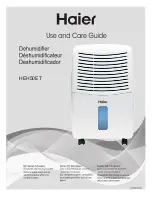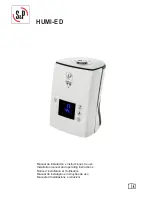
GB
77
isolated (by means of shut off valves) in a part of the
system remote from the leak. Oxygen free nitrogen
(OFN) shall then be purged through the system both
before and during the brazing process.
7 REMOVAL AND EVACUATION
• When breaking into the refrigerant circuit to make
repairs – or for any other purpose – conventional
procedures shall be used.However, it is important
that best practice is followed since flammability is
a consideration. The following procedure shall be
adhered to: remove refrigerant; purge the circuit
with inert gas; evacuate; purge again with inert gas;
open the circuit by cutting or brazing.The refrigerant
charge shall be recovered into the correct recovery
cylinders. The system shall be “flushed” with OFN to
render the unit safe. This process may need to be
repeated several times.Compressed air or oxygen
shall not be used for this task. Flushing shall be
achieved by breaking the vacuum in the system with
OFN and continuing to fill until the working pressure
is achieved, then venting to atmosphere, and finally
pulling down to a vacuum. This process shall be
repeated until no refrigerant is within the system.
When the final OFN charge is used, the system shall
be vented down to atmospheric pressure to enable
work to take place.This operation is absolutely vital if
brazing operations on the pipework are to take place.
• Ensure that the outlet for the vacuum pump is not
close to any ignition sources and there is ventilation
available.
8 CHARGING PROCEDURES
In addition to conventional charging procedures,the
following requirements shall be followed.
• Ensure that contamination of different refrigerants
does not occur when using charging equipment.
















































